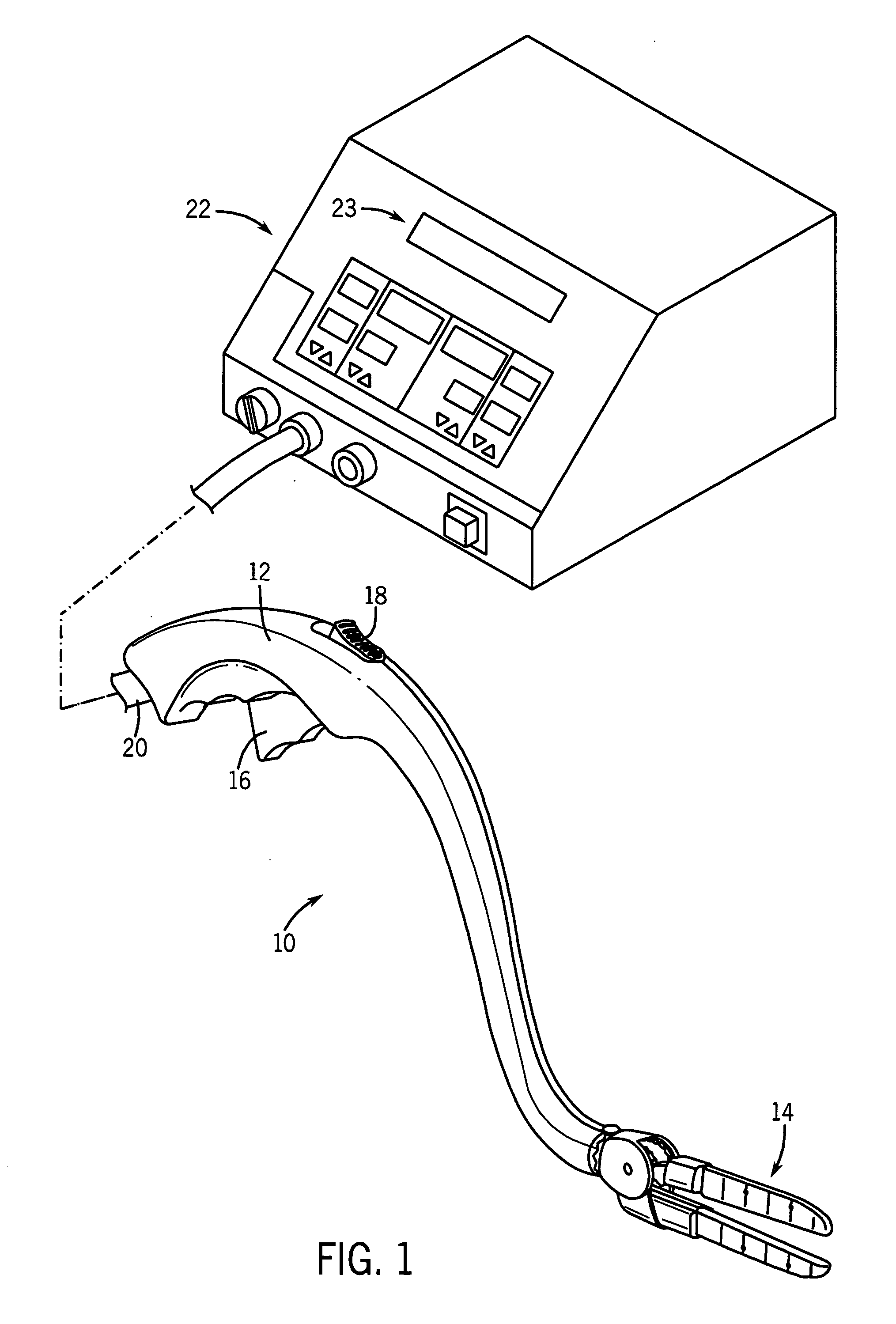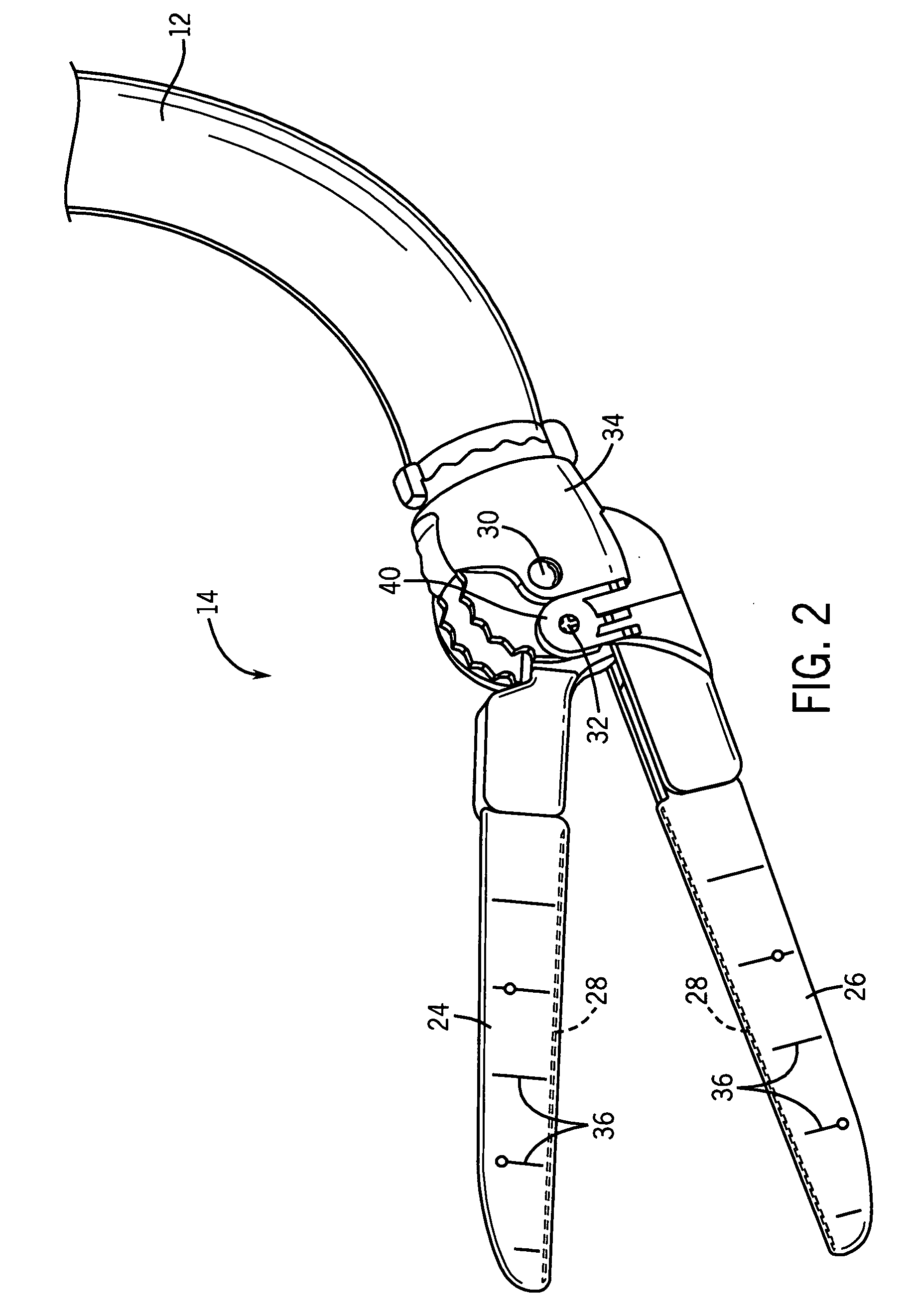Device and method for determining tissue thickness and creating cardiac ablation lesions
a tissue thickness and cardiac ablation technology, applied in medical science, surgery, diagnostics, etc., can solve the problems of cell death, intact structure, blockage of electrical pathways within the tissue,
- Summary
- Abstract
- Description
- Claims
- Application Information
AI Technical Summary
Benefits of technology
Problems solved by technology
Method used
Image
Examples
Embodiment Construction
[0025] Referring to FIG. 1, a tissue ablation device, shown as a bipolar ablation device 10 has a handle 12 and an ablation head 14. A trigger 16 may be used by a surgeon to control certain functions of the ablation head 14. A switch, shown as locking mechanism 18, may be utilized to lock the ablation head 14 into position during a surgical procedure.
[0026] Further referring to FIG. 1, in an exemplary embodiment of a tissue ablation system, bipolar ablation device 10 may be partially controlled by and may provide feedback to a control device, such as generator 22. A cord 20 serves as a conduit for various smaller cords and tubes between generator 22 and ablation device 10. For example, cord 20 may house a power line for ablation head 14, saline irrigation lines to and from ablation head 14, and various other wires and cords sending signals to and receiving signals from ablation head 14. An exemplary bipolar ablation device having many of the features described with respect to FIG. ...
PUM
 Login to View More
Login to View More Abstract
Description
Claims
Application Information
 Login to View More
Login to View More - R&D
- Intellectual Property
- Life Sciences
- Materials
- Tech Scout
- Unparalleled Data Quality
- Higher Quality Content
- 60% Fewer Hallucinations
Browse by: Latest US Patents, China's latest patents, Technical Efficacy Thesaurus, Application Domain, Technology Topic, Popular Technical Reports.
© 2025 PatSnap. All rights reserved.Legal|Privacy policy|Modern Slavery Act Transparency Statement|Sitemap|About US| Contact US: help@patsnap.com



